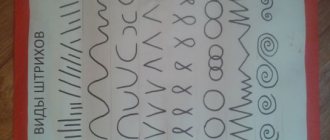Fact No. 1
The Sun is the Solar System as a whole. How can this be, because the system that is part of the galaxy is a system of planets, and the Sun is just a star, albeit the most central one. It would seem that the objects are completely different. Still, one has only to look at the Solar System in terms of its mass, and one can immediately see that the Sun occupies 98% of the total mass of the system in which humanity lives. The remaining 2% were divided to one degree or another by the 8 planets in the system, including the Earth. The lion's share of the mass is occupied by Jupiter and Saturn, the so-called “Gas Giants”. The Earth's share of the entire system accounts for an incredibly tiny mass by cosmic standards.
What is the Sun made of?
In terms of its chemical composition, our luminary is no different from other stars and contains: 74.5% hydrogen (by mass), 24.6% helium, less than 1% other substances (nitrogen, oxygen, carbon, nickel, iron, silicon, chromium, magnesium and other substances). Inside the core there are continuous nuclear reactions that convert hydrogen into helium. The absolute majority of the mass of the Solar System - 99.87% belongs to the Sun.
Composition of the Sun
Interesting fact : The Sun has an almost perfect spherical shape. The difference in diameters connecting opposite points of the equator and poles is 10 kilometers. And this despite its gigantic size!
Fact No. 6
The sun is a multi-layered star. The visible surface of a star is only its outer layer. It is called the photosphere. The temperature on it can reach 5700 Kelvin or 15561000C, because one Kelvin is equal to 2730C.
Then, at around 70% of the solar diameter, there is a layer called “convection”. Next is a zone called "Radiant Transfer". The center of the star is the nucleus. Its temperature reaches values of at least 16,000,0000C. It now becomes clear that the solar surface is not the hottest place not only on the star, but also in the solar system as a whole.
Characteristics of the Sun
The sun has the following parameters:
- Age –4.57 billion years;
- Distance to Earth: 149,600,000 km
- Mass: 332,982 Earth masses (1.9891·10³⁰ kg);
- The average density is 1.41 g/cm³ (it increases 100 times from the periphery to the center);
- The orbital speed of the Sun is 217 km/s;
- Rotation speed: 1.997 km/s
- Radius: 695-696 thousand km;
- Temperature: from 5,778 K at the surface to 15,700,000 K at the core;
- Corona temperature: ~1,500,000 K;
- The Sun is stable in its brightness, it is in the 15% of the brightest stars in our Galaxy. It emits less ultraviolet rays, but has more mass compared to similar stars.
Fact No. 7
For centuries, religion refused to acknowledge the rotation of our planet around the sun. Religious leaders and their followers considered our planet to be the center of all things. It got to the point that in 1633, a physicist named Galileo Galilei was condemned for his public support of the system of the universe put forward by Nicolaus Copernicus, who argued that the planet revolved around a star. The church considered this theory to be a theory of heretics since 1616. As a result, Galileo was imprisoned for life. Later, they took pity on him, and life imprisonment was replaced by house arrest, but under the tireless eye of the Inquisition.
The church openly acknowledged that the Earth rotates around the sun in 1992. This was done by none other than the famous John Paul II. The Pope went further and admitted that Galileo's trial was wrong, calling it a "tragic misunderstanding."
Why does the sun shine?
Many philosophers and scientists have tried to answer this seemingly simple question. The ancient Greek astronomer Anaxagoras managed to go to prison for his theory of a red-hot metal ball. Clarity came with the beginning of the 20th century and the discovery of the phenomenon of radioactivity, and then the possibility of conducting controlled nuclear and thermonuclear reactions.
It was these discoveries that lifted the veil of mystery about the origin of the most common natural phenomenon. English scientists Ernest Rutherford and Arthur Eddington were the first to suggest that thermonuclear fusion reactions occur in the depths of our star. Thanks to this, the Sun's hydrogen gradually turns into helium, releasing streams of photons that we observe as light.
Ernest Rutherford
Interesting fact : the color of our star is pure white, due to the passage of layers of the earth’s atmosphere we see it: yellow, red, orange.
Fact No. 10
The existence of life on Earth is impossible without solar heat and light. However, if we imagine that the Sun will stop giving heat, then first of all, in just one week the temperature on the surface of our planet will drop to -180C. Only a year will pass and the surface of the Earth will be stable at -730C. But that’s not all, because the temperature will not stop dropping, which will certainly result in the death of all forms of life on the planet and the onset of permafrost.
Solar eclipse
An event such as a solar eclipse has always evoked a range of feelings among ignorant people, accompanied by horror and panic. There were also those who wanted to “warm their hands on this” and earn the authority of predictors and clairvoyants. But not only thinking creatures, but also animals react to the appearance of darkness. However, for the most part, they perceive it as the onset of night.
Interesting: Why is the earth's axis tilted? Photo and video
Solar eclipse - diagrams
The scientific explanation for the phenomenon is simple: the Moon covers the Sun. This happens only during the new moon (the approximate location of all three celestial objects on the same line, and even then not always). Types of solar eclipses from the perspective of an earthly observer:
- “Private” – the satellite partially covers the star.
- “Full” – the solar disk is completely closed.
- “Ring-shaped” - the cone of the cast shadow does not reach the earth’s surface.
- “Total annular” or “hybrid” - two observers at different points simultaneously see one of the types of solar eclipses.
Solar eclipse
Observation of this phenomenon allowed us to make a number of important discoveries and examine the corona and atmosphere of the Sun. Which under normal conditions is extremely difficult. By the way, the spectacle itself does not spoil earthlings with the frequency of its appearance. The frequency of occurrence of the event is: 237 times per century.
Fact No. 12
There is no larger object than the Sun in our galactic system. To understand the size of the star, you just have to imagine that if you filled all the space it occupies with planets like the Earth, then the star would accommodate at least 960,000 of them! And this is only if you place spherical planets in the Sun. If oblate variants of planets are placed in the star, 1,300,000 planets similar to the one on which people live will be able to fill the space occupied by the Sun. In terms of area, the surface of the sun is 11,900 times larger compared to the same indicator of the Earth.
How did the Sun come into being?
There are different theories about the origin of the Sun. The most popular of them claims that the star was formed from a cloud of gas and dust that arose as a result of a supernova. As evidence, the argument is given that there is a large amount of uranium and gold in the central body of our star system.
Interesting fact: the radius of the Sun is 2100 times smaller than the radius of UY Scuti - the largest open star in the Universe.
Another hypothesis traces a long chain of transformations: a comet from the periphery of the Galaxy -> ice planet -> giant planet -> infrared dwarf -> yellow dwarf. By accumulating mass, the Sun, under the influence of gravitational forces, increased the density of the core to the point of launching thermonuclear reactions, and the possibility of retaining the atmosphere. Moreover, the attraction of the huge ball made it possible not to let go of even light gases: hydrogen and helium. True, from the surface of the star, they still evaporate into outer space.
Formation of the Solar System
There are several stars - analogues of the Sun in the constellations: Gemini, Scorpio, Canes Venatici, Poop, Draco. Their luminosity, temperature, mass, density and approximate age coincide with our star.
An interesting fact: the prospects for the evolution of the Sun are such that one day it will burn and devour the Earth (red giant), and then itself will take its size (white dwarf).
Life cycle of the Sun
Apparently, the Sun owes its appearance to protostars of previous generations, since it contains a significant amount of metals. Its age is 4.5 -4.75 billion years, and all this time it increases its brightness and temperature (flares up).
Life cycle of stars
Interesting fact: the magnetic field of our star has a cycle of change approximately equal to 22 Earth years. Which is equal to two periods of solar activity in 11 years.
Such a physical process cannot occur without loss of mass of hydrogen, which is the main element in the composition of the star. Someday this will end, the hydrogen will burn and evaporate, and the helium will begin to shrink. The size of the star will increase until it reaches the limits of the Earth's orbit. The Sun will become a red giant and will remain in this state for approximately 120 million years. Then a nebula will appear due to a significant decrease in mass and a gigantic expansion of the outer layer. It will change from a red giant to a white dwarf, which will turn black in a few trillion years.
Interesting: How are clouds formed? Description, photo and video
Poems about sunflower
Poems about sunflowers in a rhythmic form with rhyme will tell even more about the beloved and unusual sunflower.
Sunflowers
Sunflowers, yesterday's beauties, are begging for something from the ground. And their withered, thick brown shell stuck to their bowed heads.
And closely - neither add nor subtract The seminal flesh hardens in each, United by tiny foreheads, Accumulating dew like difficult sweat.
Just yesterday the sun painted them with thin brushes of rays. They looked festive and juicy and were even hot from the sun.
Today everything is so openly dry that I don’t dare to struggle with the solution. Having come to terms with the fact that, just like a sunflower, having given birth to Life, I will withdraw myself.
Sunflower
Golden sunflower, Petals - rays. He is the son of the sun and a cheerful cloud.
In the morning he wakes up, the sun shines, at night his yellow eyelashes close.
In summer our sunflower is like a colored lantern. In the fall he will give us little black seeds. Tatiana Lavrova
* * *
That summer I planted sunflower seeds, loosened them, watered them with water, and fenced them in with a fence. And the sunflowers grew much higher than me, reaching with their hats Almost to the very roof! And in winter I will feed the ripened seeds to the birds: Sparrows, doves, crows and titmice.
* * *
Sunflowers smell Sunflowers smell of sunny freshness. Also, of course, Morning tenderness. And they always smell, no matter the weather. Take a look at them and forget the troubles.
Alexey Antonov
Sunflower
On an autumn, but harvested field, a lonely sunflower stands. I didn’t cut him down, and how long will he look at the gloomy sky?
Everyone knows that winter is coming, the sun is the most desirable thing in the sky. So let my sunflower replace it in my garden.
I take care of him and feel sorry for him, and I won’t let him bend or fall. He, like a maiden, with his beauty awakens dormant passion. L. Nelyubov
* * *
A sunflower has blossomed in the garden, And it reaches for the sun all day, It leads its head after the sun, So that it does not fall into the shadow. When the sun sets, He waits until the morning, Sighing in the dark garden: - Get up, sun! It's time!
Little sun
Why, why does the sunflower reach out to the sun, Even in the morning, when he is asleep, does he look straight at it? I'll tell you why: The sunflower has a very close relationship with the sun. A sunflower blooms on the ground - a small sun, many grains full of oil, at its bottom...
* * *
A sunflower bloomed under the sun today. I gathered bugs and bees for my flower. The restless people are humming and buzzing, As if the sunflower itself is singing a song N. Nekhaeva
* * *
Here are the sunflowers, a whole row along the fence! They reach for the sun, full of black seeds!
Do not take your eyes off the sun Yellow sunflowers. They won’t tire of admiring the shining brother.
R. Aldonina
* * *
Sunflower bowed his neck: “I guess I’m sick?” It’s getting harder and harder for me to hold my head... Oddball, he’s not sick, He’s ripening and ripe, And soon he’ll be able to give his seeds to everyone.
M. Plyatskovsky
* * *
Under the sun, Under the sun, Right by the path, A golden sunflower Frozen on a thin stalk. Probably an important general, world-famous. He was once ordered to stand at attention.
* * *
I'm ordinary - I'm not fashionable, I'm not proud - I'm simple, I'm gardening and a little golden. I am the breadwinner for all the crows, I am the guy for all the flowers. I have the same last name as the sun - maybe some kind of relative?
E. Golubenko
* * *
The sun is shining in the field, Well, the rays are walking, They ran along the path, Golden legs of the sun. They sat on a sunflower, The seeds ripened, Black in color, like coals, With a white grain inside.
A. Poletaeva
* * *
It grows by the fence and blooms like the sun. Look quickly, He turns his head: The sun turns where, He immediately looks there! He lives under the sun, He rises early with the sun. The sun loves him! His name is SUNFLOWER!
F. Sokolova
DIY sunflower
Having completed the educational story about the sunflower, having read the poems and solved the riddles about the sunflower, I invite big and small craftswomen to the screen. Let's make a sunflower with our own hands from magic foamiran!
Follow the master class in the video and you will get a wonderful, bright hair clip!
Watch how to draw a sunflower step by step in this video:
In search of toys and children's products on this topic and more, you can look here https://alimpopo.ru/category/obzory-tovarov/detskoe. There you can find good children's clothing, balance bikes, children's toys, high chairs and much, much more. A real treasure for parents: detailed description, pros and cons, life hacks and secrets of use.






